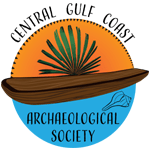Thursday, February 21, 2019
History Washing Away: The Archaeological Past and Future of Egmont Key
Egmont Key spent most of its existence as an unremarkable, uninhabited sand island at the mouth of Tampa Bay, visited by the indigenous inhabitants of Florida only occasionally as a temporary fishing stop. But over the course of the last 170 years, this small landmass experienced an intensity of occupation that belied its sleepy early history. Variously utilized as a lighthouse station, a concentration camp for Seminole prisoners of war, a fortified military installation, and a wildlife refuge, Egmont Key represents an archaeological site with the potential to illuminate several different eras of American history. A fortuitous wildfire in 2016 allowed Tribal archaeologists to perform a preliminary survey of the island, and artifacts likely dating to the time of the Seminole internment were recovered. However, Egmont Key has lost more than half of its land area over the last century, and environmental threats to the island itself represent significant challenges for the future.
Ben Bilgri, M.A., RPA, works as an Archaeological Field Technician with the Seminole Tribe of Florida’s Tribal Historic Preservation Office. He has nearly 15 years of experience working on a wide variety of projects throughout the American Southeast. His personal research interests include the study of depositional patterns at battlefields and other military archaeological sites.
This program is sponsored by the Central Gulf Coast Archaeological Society, and the Alliance for Weedon Island Archaeological Research and Education.


